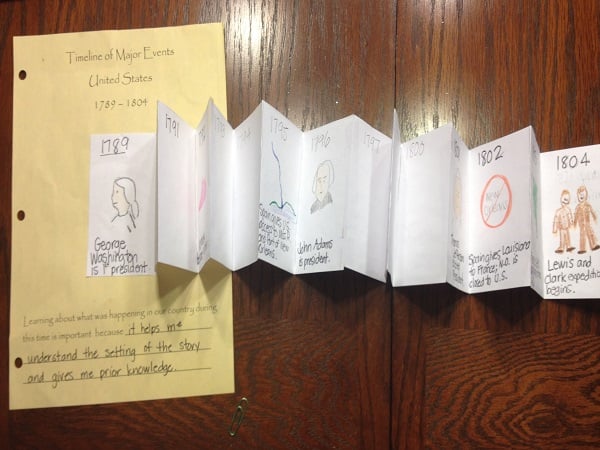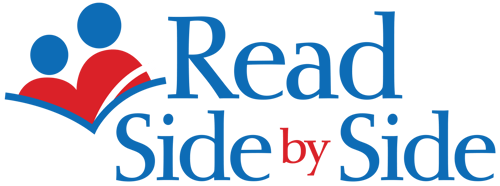One reason I love the third CIA unit for 4th grade, Streams to the River, River to the Sea, is the opportunity to integrate Social Studies content and skills throughout the book. Students use skills like reading maps, making and using timelines, and of course learning about the explorers and Native Americans of the Northwest. They will start using these skills as we build background knowledge for the book.
A resource I’m using this year is National Geographic Society’s How We Crossed the West: The Adventures of Lewis and Clark, by Rosalyn Schanzer. It’s a nice complement to the resources in the unit, and I especially like the map:

For the timeline lesson, I’m going to have the students make a foldable timeline. I did this last year and it worked out well - for building background knowledge AND meeting a Social Studies learning target. I gave each student two pieces of legal size paper, cut in half length-wise. We folded each piece into fourths and taped them together, which creates enough sections to include all the events from Sarah’s timeline. We labeled the sections with events, and students drew a picture, too, if they wanted to. When finished, we accordion-folded it up, paper clipped it closed, and glued in onto this page.
The students are eager to be reading this book!
There’s one other exciting thing I have to share! All of our hard work with using the question stems for turn-and-talks is beginning to impact small group reading and writing. Last week I was SO excited while meeting with one group - a group of kids who have at times struggled to use the stem (or they use a different stem, like “I predict…”) during Read Aloud. After one student shared his response to a written question, another student respectfully disagreed, and pointed out in the book why. A third student responded by saying he DID agree, and found evidence in the book to support his answer. The whole group of 6 got involved in the discussion, and finally came to an agreement about what the most accurate answer was, and why. It was AMAZING, and I almost did my happy dance (but I didn’t want to scare them!) I did complement them, and explained how important it is to be able to talk about the big ideas in their reading, using evidence from the text to support their thinking. I know that the next step is to confidently apply these strategies and skills in their written responses to reading. Hooray!
